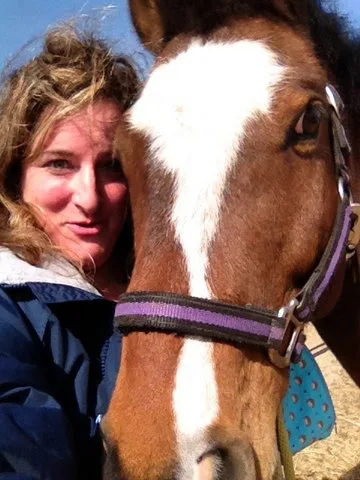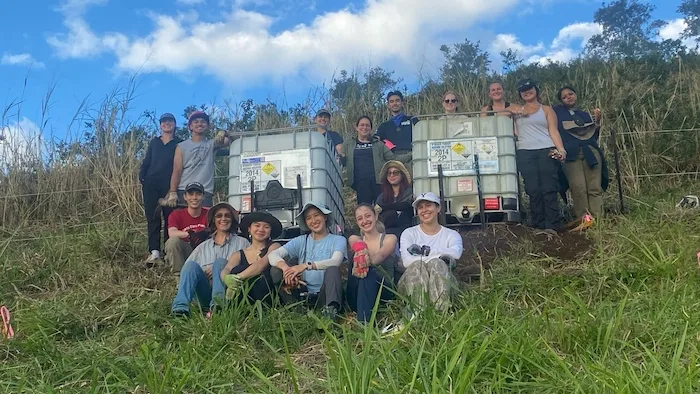Alumni Profile: Gwendolen Gross

In honor of the 25th anniversary of the SFS Centre for Rainforest Studies in Australia, we reached out to our alumni to ask about some of their fondest memories from the Wet Tropics. We heard back from many, including Gwendolen Gross Australia Spring ’88, an accomplished novelist, who wrote:
“A great adventure and much fodder for my first novel, Field Guide! I’ve published four more, but the world of Millaa Millaa will always be vivid in my memory.”
In Field Guide, the main character Annabel Mendelssohn travels to North Queensland, Australia to study spectacled flying foxes at a research station not unlike SFS. She soon settles in to life among scientists in the rainforest – listening to the dawn chorus, avoiding leeches, and hiking past stinging trees. But her newfound tranquility is interrupted by the mysterious disappearance of her professor and mentor, Dr. John Goode.
We recently interviewed Gwendolen to learn more about the intersections between her SFS experience and Field Guide.
Why did you decide to study abroad with SFS in Australia?
It was 1988, my junior year of college at Oberlin. I adored Oberlin, but was fascinated by the idea of field science. I’d always wanted to write about science—fancying, perhaps, a job as a National Geographic journalist—and I’d done quite a lot of backpacking and adventure —read: budget —travel. I picked up a brochure at a campus fair for programs abroad, and knew SFS was for me. It was later I learned I preferred an amalgam of invented and real world fiction to science journalism.
How did the idea first come to you to set your novel at a field station, and in North Queensland in particular?
I worked in textbook publishing after college—nursing and science textbooks—and did quite a bit of freelance writing for science supplements. Then I worked in children’s books, and found a tiny ad in the San Diego free paper for a lunchtime Brown Bag writing workshop—and began writing poetry. This led to a wild outpouring of creative writing, and a fellowship with PEN West, and the realization that even if it wasn’t exactly practical to get an MFA in writing, I had paid off the first round of student loans, and I had to give writing some serious attention. My very first novel, which lives in a drawer, was about a girl who would sing before she could speak. I could whistle before I could speak. But when I got to grad school, I was ready to write about the extraordinary place I had studied abroad. Millaa Millaa really was a character all its own.
The story is rich in detail…describing the humidity, the flora and fauna, the national parks…but it was published in 2001, many years after your student experience. How did the memories stay so fresh?
Lots of those details stayed with me—as details probably stay with anyone who lives an SFS adventure. It’s such a different sensory experience. For me, writing is about relating the sensory world, sharing how things smell and taste and feel with someone else. As a reader, I want to taste and feel and hear, and suspend disbelief. Readers can live in the frame of the book, the invented, or captured world. I also had journals and notes, tons of notes, about the bats, on my waterproof paper!
Do bats intrigue you as much as they do your main character?
They do, they really do. I was hoping that Annabel could use bats as a lens to see herself–to see how we all live in colonies, whether in a group house in North Queensland or an apartment building in New York City. We’re animals of space and community culture, of collective work and isolation at the same time. Competition and collaboration. In many ways, young adulthood is about understanding that, and understanding how we move from one family into the world of our next, chosen families.
You have gone on to publish numerous books since Field Guide. Is the sense of place a defining characteristic in all your novels?
I hope sense of place is important in each. After the first two books, Book Magazine dubbed me, “The Reigning Queen of Women’s Adventure Fiction.” I am very proud of that title, though my next books deal with other landscapes – the landscape of relationships. In The Other Mother, I explore the conflicts between a stay-at-home and working mom. In The Orphan Sister, I look at sisterhood. The latest, When She Was Gone, has a strong sense of place—but the characters create the place. With each book, I hope to always get closer to telling the truths of life—not the facts, but what seems truest to me, about how we relate to each other, how we connect, and how we miss.
Related Posts

Reuniting with Tanzania: Eric Walsh’s “Reunion Flag” Keeps the Spirit Alive

Restoration on a Cinder Cone: A Syntropic Story
